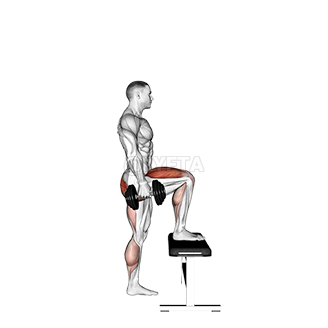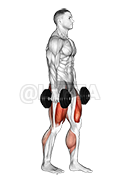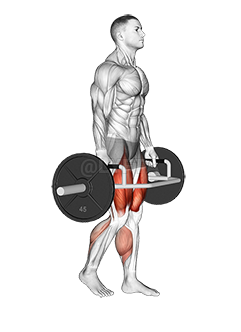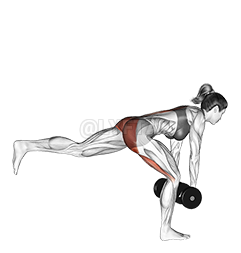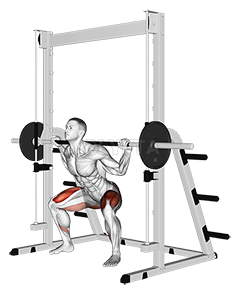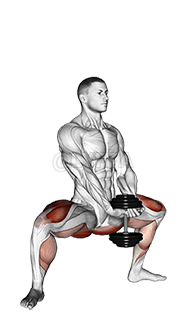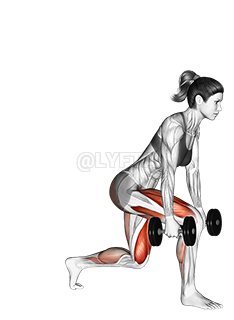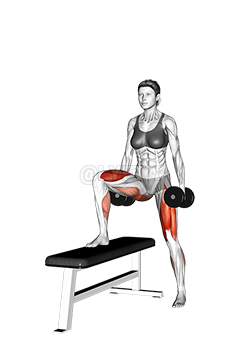
Step-up
Exercise Profile
Related Exercises:
Introduction to the Step-up
The Step-up is a versatile exercise that primarily targets the muscles in your legs and glutes, providing strength, balance, and stability. It's an excellent workout for both beginners and advanced fitness enthusiasts since it can be modified to different fitness levels by adjusting the height of the step or adding weights. People would want to do step-ups because they mimic real-life movements, making them functional, while also helping to correct muscle imbalances, improve coordination, and boost overall lower body power.
Performing the: A Step-by-Step Tutorial Step-up
- Step up onto the bench with your right foot, pressing through your right heel as you lift your left foot to meet your right so you are standing on the bench.
- Maintain your balance, keep your body upright and ensure your core is engaged.
- Slowly lower your left foot back down to the ground, followed by your right foot, returning to your original standing position.
- Repeat the exercise by alternating the leading foot each time, ensuring to keep your movements controlled and steady.
Tips for Performing Step-up
- Maintain Posture: Keep your chest up and shoulders back throughout the exercise. This will help you maintain balance and prevent hunching, which can lead to back strain or injury. Make sure to engage your core muscles to help maintain this upright posture.
- Control Your Movement: Avoid the temptation to use momentum to propel yourself upwards. Instead, focus on using your leg muscles to drive the movement. This ensures that you're getting the most out of the exercise and not risking injury by losing control.
- Avoid Locking Your Knees: When you step up, make sure not to lock your knee at the top of the movement. Keeping a slight bend in your knee will ensure that the focus remains on your
Step-up FAQs
Can beginners do the Step-up?
Yes, beginners can do the Step-up exercise. It's a great exercise to start with as it targets the quadriceps, hamstrings, and glutes. It's also a functional exercise, meaning it helps improve balance and coordination. Beginners should start with a low step and gradually increase the height as their strength and balance improve. Remember to maintain proper form to avoid injury. It's also a good idea to have a trainer or workout buddy observe your form when you're first starting out.
What are common variations of the Step-up?
- The Step-up with Knee Raise adds a knee lift at the top of the step-up to engage the core and improve balance.
- The Weighted Step-up incorporates dumbbells or a barbell to increase the resistance and make the exercise more challenging.
- The Plyometric Step-up, also known as the Box Jump, adds a jump at the top of the step-up to increase power and explosiveness.
- The Step-up with Overhead Press includes a shoulder press at the top of the exercise to work the upper body in addition to the lower body.
What are good complementing exercises for the Step-up?
- Squats: Squats are another compound exercise that works the same major muscle groups as step-ups, including the quads, hamstrings, and glutes. The similar muscle engagement between the two exercises can improve overall lower body strength and endurance.
- Calf Raises: Calf raises target the lower leg muscles, especially the calf muscles, which are also engaged during step-ups. Strengthening these muscles can improve balance and stability, making the step-up exercise more effective.
Related keywords for Step-up
- Dumbbell Step-up exercise
- Hip strengthening workouts
- Dumbbell exercises for hips
- Step-up workout with weights
- Lower body exercises with dumbbells
- Dumbbell step-up for hip muscles
- Fitness routine for hip strength
- Weight training for hips
- Step-up exercise with dumbbells
- Hip targeting workouts with dumbbells
